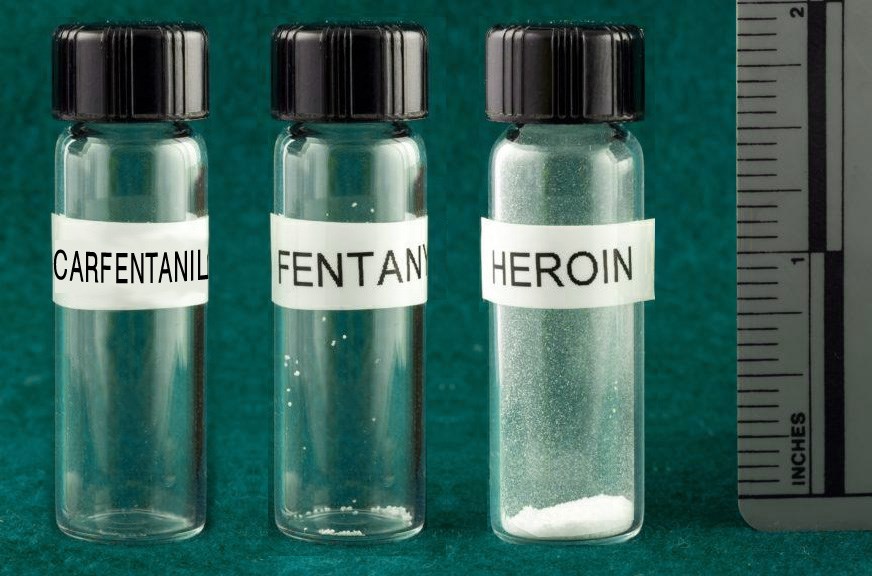Living in the Sea to Sky Corridor, it is sometimes easy to believe we are insulated from issues we hear so much about in the big city, such as fentanyl overdoses.
However, a new report from the BC Coroners Service shows that residents in our region aren’t immune.
In the first 10 months of 2017, there were 31 deaths where fentanyl was detected in the North Shore/Coast Garibaldi region, of which Squamish is a part. There have been 62 such deaths in the region since 2012, but 48 of those occurred in the years 2016 and 2017, showing a dramatic recent increase.
“It is absolutely a concern,” said Mayor Patricia Heintzman. “It is impacting literally every community in North America.”
Local police and other front line workers in Squamish are hyper alert to the crisis, Heintzman added.
“They are all Naloxone trained,” she said. Naloxone is an antidote for opioids.
In the last budget cycle, funding went to ensure Squamish RCMP are equipped with gear to protect them from contact with the drug, according to Heintzman.
“We have been cognizant of those issues and making those investments from a policing point of view and making sure our first responders and other agencies are prepared… it has been on everybody’s radar.”
Provincially, fentanyl-related deaths were up 136 per cent in the first 10 months of 2017 from the same period the year prior.
“There is no question that this is a public-health crisis that is impacting people from all walks of life, and we need to continue to work together to help reduce stigma and increase awareness and support for those at risk,” said chief coroner Lisa Lapointe in a news release.
There were 999 illicit drug overdose deaths across the province where fentanyl was detected from January to October 2017, according to the report released Wednesday.
Men fell victim to overdoses far more often than women, accounting for 83 per cent of the deaths during that time in 2017.
Twenty-eight per cent of the dead were in the prime of their lives, aged 30 to 39.
Most who died — 92 per cent — were between 19 and 59.
The vast majority of drug overdoses, close to 60 per cent, happened at home while 12 per cent happened in vehicles, on sidewalks, streets or in parks.
These are statistics that stood out for Heintzman.
“You often think it is a street issue or a party issue or something like that, but so many of these situations are simply happening in a home,” she said, noting the overdose deaths of young parents Hardy and Amelia Leighton in North Vancouver in July, 2015 were a wake up call for her personally.
“That was the first time I really started to be really aware that this is insidious and it can affect anybody anywhere and this is a serious health issue,” she said.
The top four drugs detected in overdose deaths in B.C. from 2016 to 2017 were fentanyl ( 67 per cent ); cocaine (almost 50 per cent ); meth (30 per cent) and heroin (30 per cent).
There were no overdose deaths in supervised injection sites.
What is Fentanyl?
Fentanyl, an opioid, was originally intended as a strong pain reliever used in hospital. It is in the same family as heroin, morphine, methadone and codeine.
Fentanyl is around 50 to 100 times more toxic than morphine.
There is no way to detect by looking at it if fentanyl is in other illicit drugs.
What is Carfentanil?
Carfentanil is a synthetic opioid normally used as a sedative for large animals.
It can be 100 times more toxic than fentanyl.
Responding to an overdose
Call 911 if you suspect an overdose, the sooner you call, the better the chance of recovery. While you’re waiting for first responders to arrive, follow SAVE ME protocol.
Know that you are protected by the new Canadian Good Samaritan law. You will not be arrested or charged for drug possession by police if you call 9-1-1 to save the life of someone who overdoses.
SAVE ME protocol
Stimulate. Check if the person is responsive. Can you wake them up?
Airway. Make sure there is nothing in the mouth blocking the airway, or stopping them from breathing.
Ventilate. Help them breathe. Plug the nose, tilt the head back and give one breath every 5 seconds.
Evaluate. Do you see any improvement?
Muscular injection. Inject one dose of naloxone into a muscle. Click here to learn more about Naloxone and how to safely administer it.
Evaluate and support. Is the person breathing? If they are not awake in 5 minutes, give one more 1cc dose of naloxone.
If you need to leave the person alone for any reason, place them into the recovery position before you leave to keep the airway clear and prevent choking.
Turn onto the side.
Place hand under head to support the head.
Place the top leg slightly in front of the leg touching the ground, and place the knee to the ground to prevent the body from rolling into the stomach.
— From www2.gov.bc.ca



